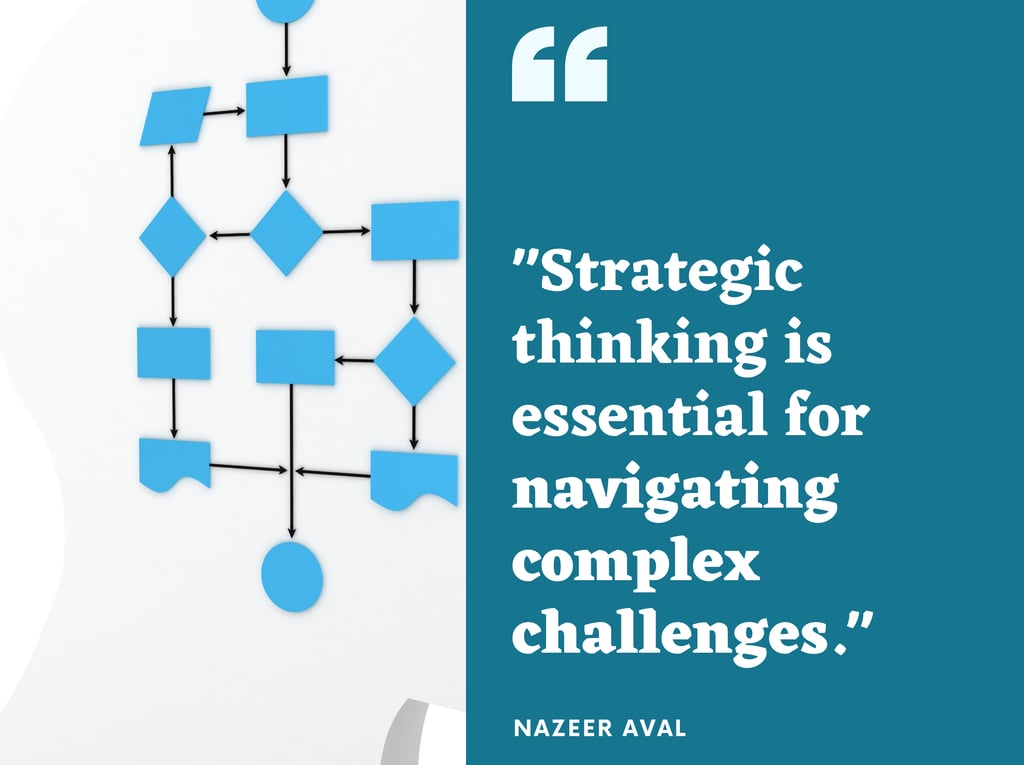Avoid 10 Pitfalls in Strategic Thinking for Business Growth
Strategic thinking is essential for sustainable business growth. Discover 10 critical pitfalls that business owners must avoid to maintain a long-term vision and lead effectively. Learn how to enhance your strategic focus and drive success.
SUSTAINABLE COMPETITIVE ADVANTAGE
Nazeer Aval
12/21/20244 min read


1. Getting Stuck in Day-to-Day Operations
When leaders are constantly immersed in operational tasks, they lose sight of the bigger picture. It's easy to fall into the cycle of firefighting daily issues, managing tasks, and troubleshooting problems. While these tasks are essential for keeping the business running smoothly, they consume valuable mental energy and time that could otherwise be invested in strategic initiatives. Leaders must recognize that being perpetually stuck in operations not only stalls long-term progress but also creates a dependency on their involvement for every small decision. Without stepping back to evaluate the larger goals and direction, businesses risk stagnation and missed opportunities.
2. Lack of Dedicated Thinking Time
Strategic thinking requires uninterrupted, focused time, which is often hard to come by amidst the chaos of daily operations. Many leaders make the mistake of believing they will find time for strategic planning organically. However, without deliberately setting aside blocks of time for reflection, analysis, and future planning, strategic thinking becomes an afterthought. Leaders need mental space to assess their business landscape, explore innovative ideas, and envision future possibilities. Without this clarity, decisions may become reactive rather than proactive, leading to misaligned priorities and short-term fixes that fail to address deeper challenges.
3. Ignoring Industry Trends and Market Changes
Businesses do not operate in a vacuum. External factors such as market trends, technological advancements, and competitive pressures are constantly evolving. Leaders who focus solely on internal operations risk missing critical shifts in their industry. Failing to stay informed about these changes can leave a business vulnerable to disruption or missed growth opportunities. Strategic leaders remain vigilant, observing trends, predicting shifts, and positioning their business to adapt and thrive in changing environments. Without this outward focus, even well-established businesses can quickly become obsolete.
4. Failing to Align the Team with the Vision
A leader's vision is only effective if it's understood, embraced, and acted upon by the entire team. Misalignment between leadership goals and team execution can create confusion, inefficiency, and disengagement. Leaders sometimes assume that sharing their vision once is enough, but strategic alignment requires consistent communication and reinforcement. Teams need clarity on how their individual roles contribute to broader objectives. Without this connection, employees may focus on tasks that seem urgent but don't align with long-term goals, ultimately hindering strategic progress.
5. Not Reviewing and Adapting the Strategy
Strategic plans are not set in stone—they require regular evaluation and adjustment. Markets change, customer needs evolve, and unexpected challenges arise. Leaders who fail to revisit their strategies risk pursuing outdated goals or missing emerging opportunities. Regular strategy reviews allow businesses to assess their progress, identify roadblocks, and recalibrate their approach. Strategic thinking is not a one-time exercise but an ongoing discipline that requires agility and a willingness to adapt. Without periodic reviews, strategies can quickly become irrelevant.
6. Overlooking Organizational Culture
A company's culture plays a significant role in the success of its strategic initiatives. Toxic or misaligned workplace cultures can sabotage even the best-laid plans. When employees feel undervalued, disconnected, or unsupported, their productivity and commitment suffer. Strategic thinking requires a culture that fosters trust, collaboration, and innovation. Leaders must prioritize building a culture where team members feel empowered to share ideas, take calculated risks, and contribute to the organization's long-term goals. Without a strong cultural foundation, strategies often fail during execution.
7. Micromanaging Instead of Delegating
Micromanagement is a common pitfall for leaders who struggle to let go of control. While it's natural to want oversight, excessive involvement in minor details stifles team autonomy and hampers strategic focus. When leaders spend too much time managing every task, they lose valuable bandwidth for high-level decision-making and planning. Empowering capable team members to own their responsibilities not only builds trust but also frees leaders to concentrate on strategic priorities. Without delegation, leadership energy remains trapped in operational minutiae.
8. Making Decisions Without Data
In today's data-driven world, strategic decisions should be based on evidence, not assumptions. Leaders who rely on intuition alone risk making costly errors. Data provides valuable insights into market trends, customer behavior, and operational performance. It helps leaders validate their assumptions, measure progress, and identify growth opportunities. However, data must be interpreted correctly, and leaders must be willing to act on its findings. Ignoring data in favor of gut feelings can result in flawed strategies and missed objectives.
9. Failing to Prioritize Goals
One of the most significant challenges in strategic thinking is deciding what to prioritize. Leaders often spread their focus too thin, attempting to address every goal simultaneously. This lack of prioritization dilutes resources, energy, and attention. Strategic success comes from identifying the most critical objectives and channeling resources toward them. Leaders must learn to say no to initiatives that do not align with their long-term vision. Without clear priorities, businesses risk aimless execution and underwhelming results.
10. Neglecting Personal Growth and Development
Leadership is not a static role—it requires continuous growth and adaptation. Leaders who neglect their personal development risk becoming outdated in their knowledge, skills, and perspectives. Strategic thinking flourishes when leaders are exposed to new ideas, industry insights, and leadership techniques. Personal growth not only enhances decision-making abilities but also sets an example for the rest of the organization. Leaders who prioritize their own development create a culture of continuous improvement, driving long-term success for their business.
Strategic thinking isn't a one-time activity—it's an ongoing discipline. Avoiding these ten pitfalls will help you stay focused on long-term goals while managing the operational demands of your business.

